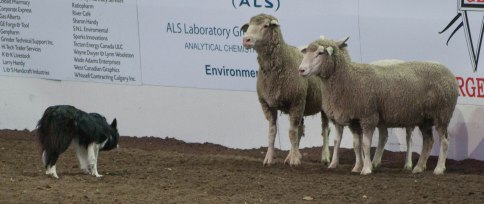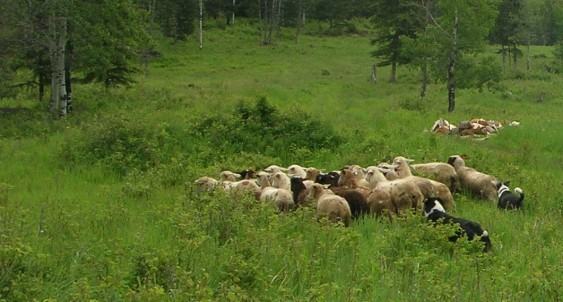You go to a trial or a stock dog demonstration and the announcer explains the creeping and staring behaviour of the dog, usually a Border Collie. The explanation is that the dog is mezmorizing or hypnotizing the sheep. Of course the sheep is standing still as if it is transfixed. Some instructors even use this analogy. For those that believe this I hate to burst the bubble.
The behaviour you are witnessing is in fact a instinctual behaviour. It is actually a stocking, preditory behaviour. If you watch any nature videos of preditors you will notice the exact behaviour as the predator stocks its prey. In some cases, particularly if the handler does not have good control of the dog, the dog will eventually lung at the sheep and attempt to take a grip (bite).
The apparent frozen sheep is in fact a very alert sheep waiting for the last second to decide what to do, stand their ground or flee. If there is a sudden movement from the dog usually the sheep will run. If the dog continues to creep the sheep will not move(usually) until the dog starts to approach the flight zone then it will make it’s move.
Its a simple explanation to this behaviour. It is interesting to watch the stock when this is happening. Watch your stock and you will begin to learn how to anticipate what may happen.



